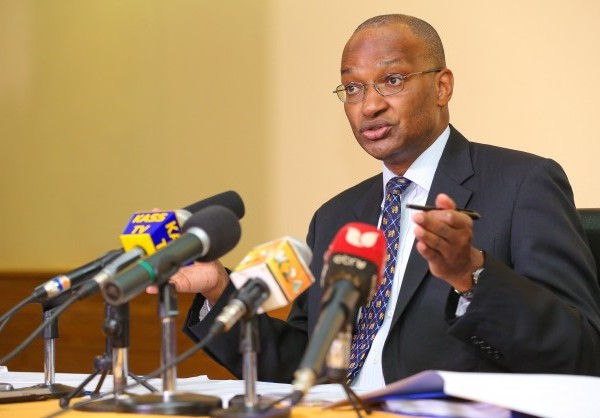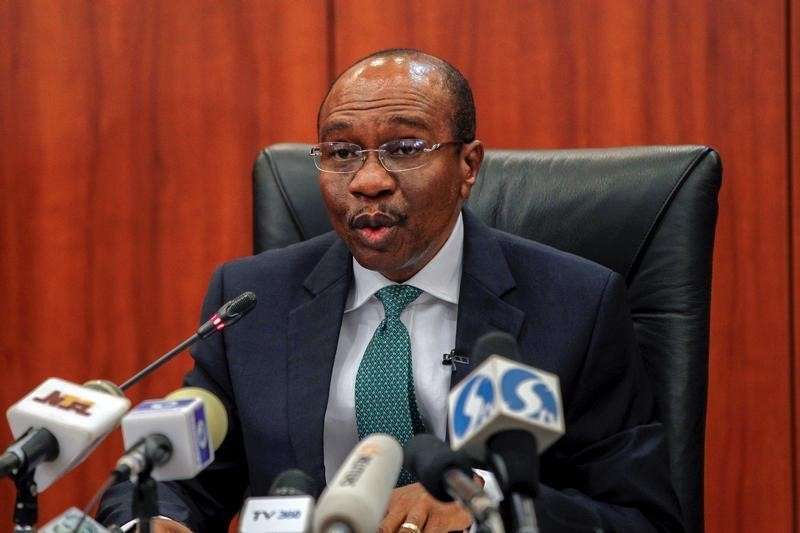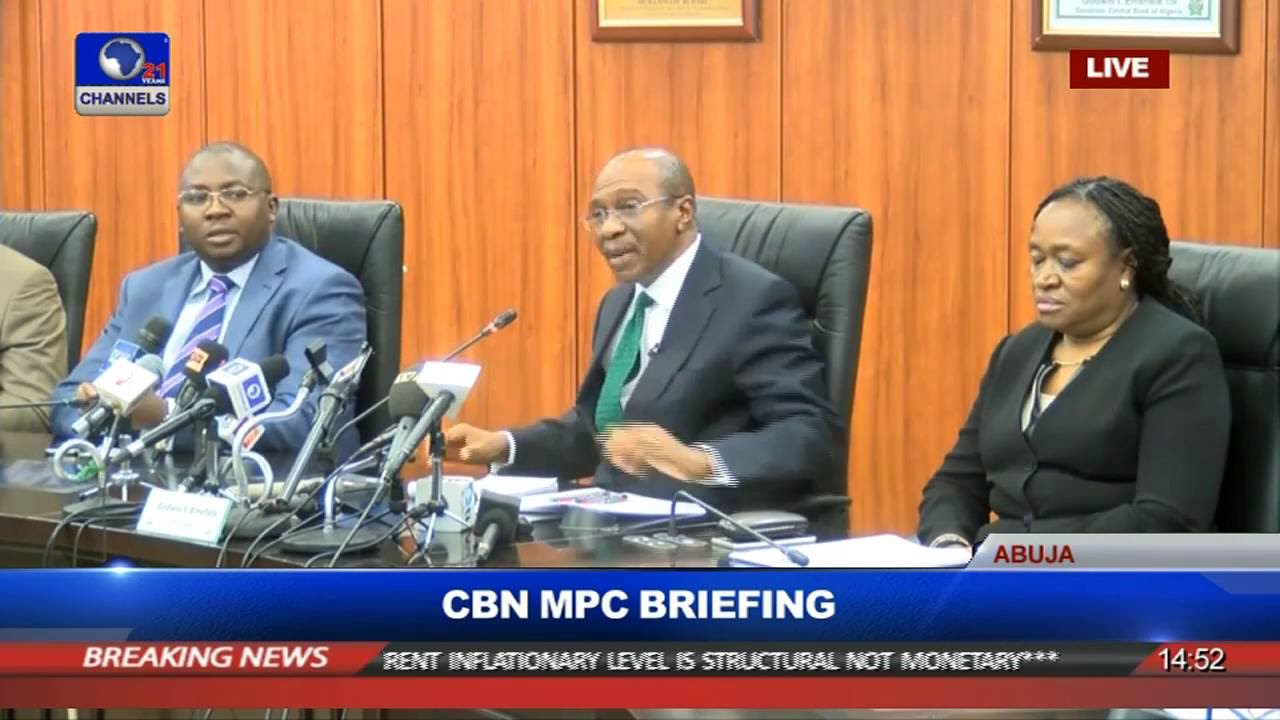Economy
Kenya Retains Interest Rates At 10% To Boost Economy


By Modupe Gbadeyanka
The Central Bank of Kenya (CBK) has announced that it is retaining its Central Bank Rate (CBR) at 10 percent.
This decision was reached after the Monetary Policy Committee (MPC) meeting held on Monday, November 28, 2016, to review the outcome of its previous policy decisions and the recent economic developments.
Business Post gathered that the MPC meeting took place against the backdrop of increased uncertainties in the domestic and global economies.
It explained that it retained the rates due to the prevailing domestic and global economic uncertainties and the need for more conclusive information on these developments.
According to Chairman of the MPC, Dr Patrick Njoroge, it was noted that the country’s month-on-month overall Consumer Price Index (CPI) inflation rose to 6.5 percent in October 2016 from 6.3 percent in September.
This, it was learnt, was caused largely due to changes in the prices of food items such as tomatoes and sugar.
However, the overall inflation remained within the government target range.
Also, the month-on-month non-food-non-fuel (NFNF) increased to 5.4 percent in October from 5.1 percent in September, reflecting increases in the prices of items in the clothing and footwear CPI category and the impact of the excise tax introduced in December 2015.
The 3 month annualized NFNF inflation rose slightly in October, an indication of mild demand pressures in the economy.
The MPC further observed that the foreign exchange market has been relatively stable despite the volatility in the global financial market following the US elections and the seasonal increase in demand for foreign exchange by corporate to finance dividend payments.
It said the foreign exchange market continues to be supported by the narrowing of the current account deficit mainly due to lower imported petroleum prices, lower imports of machinery and equipment, and resilient diaspora remittances. Tourism earnings and export receipts from tea and horticulture have stabilized.
The MPC said the CBK’s foreign exchange reserves which currently stand at $7,305 million (4.8 months of import cover) together with the Precautionary Arrangements with the international Monetary Fund (equivalent to $1.5 billion) have continued to provide adequate buffers against short-term shocks.
But the CBK said it was working closely with the National Treasury to ensure coordination of monetary and fiscal policies. Execution of the government’s domestic borrowing plan for FY2016/17 continues to support stability in the market.
It was disclosed that banking system liquidity and its distribution have stabilized. The average commercial banks’ liquidity ratio increased to 43.6 percent in October from 41.9 percent in August 2016 and the average capital adequacy ratio stood at 19.1 percent in October.
The CBK continues to closely monitor credit and liquidity risks in the sector. Continued interest of foreign banks to enter the local market indicates confidence in the banking sector.
Following the introduction of interest rate caps on back lending and deposits, the Committee noted that the available data were inadequate to facilitate a conclusive analysis of their impact on monetary policy and the overall economy. The CBK will continue to closely monitor developments in this respect.
The MPC also observed that private sector credit growth had stabilized at 4.6 percent in October. The slower growth witnessed over the last several months was found to be largely an outcome of structural factors in the banking sector rather than monetary policy.
However, there is no evidence that this is having a negative impact on economic growth.
The performance of the economy in the second quarter of 2016 was strong, growing by 6.2 percent compared to 5.9 percent in a similar period of 2015.
The MPC Market Perception Survey conducted in November 2016 showed mixed expectations. While the non-bank private sector remains optimistic for higher growth in 2016, banks were cautious as they continue to monitor the potential impact of the capping of interest rates.
Also, global growth prospects remain fragile on account of uncertainties in part due to the impact of Brexit and political developments in the U.S. Uncertainty relating to the tightening of US monetary policy and its implications for global capital flows remain a concern.
The Committee concluded that inflationary pressures were mild and inflation will remain within the Government target range in the short term.
Economy
Geo-Fluids Seeks Approval to Raise Share Capital to N25bn

By Aduragbemi Omiyale
One of the players in the hydrocarbon business in Nigeria, Geo-Fluids Plc, which trades its securities on the NASD OTC Securities Exchange, is planning to restructure its share capital with an increased of about 1,090 per cent.
Next Monday, the company will hold its Annual General Meeting (AGM) and one of the resolutions to be tabled to shareholders by the board is an authorisation for raising the share capital from N2.1 billion to N25.0 billion.
This is to be achieved by creating an additional 45,742,332,488 ordinary shares of 50 kobo each, each ranking pari passu in all respects with the existing ordinary shares of the firm.
Funds from this action would be used to expand the business scope to include hydrocarbons, mining, and natural resource development.
“That the share capital of the company be and is hereby increased from N2,128,833,756 to N25,000,000,000 ordinary shares of 50 kobo each, each ranking pari passu in all respects with the existing ordinary shares of the company,” a part of the resolutions read.
In addition, Geo-Fluids wants approval, “To undertake the business of bitumen production and processing in all its forms, including but not limited to the exploration, prospecting, drilling, extraction, refining, treatment, blending, storage, packaging, distribution, marketing, importation, exportation, shipping, transportation, trading, and general supply of bitumen, its derivatives, by-products, and ancillary materials; and to carry on all other related or incidental undertakings, services, or operations that may be considered advantageous, beneficial, or necessary for the advancement, expansion, or diversification of the bitumen industry.”
Also, it wants the authority of shareholders, “To engage in the acquisition, development, and management of mining assets and concessions for the purpose of exploring, extracting, processing, and producing hydrocarbons, oil and gas, minerals, and other natural resources; and to develop, mine, and process coal, industrial minerals, and other raw materials required for industrial, commercial, energy, or infrastructural purposes, together with all related activities necessary to ensure the effective exploitation, utilisation, and commercialisation of such resources.”
Further, it wants, “To operate and participate in all segments of the oil and gas value chain, including but not limited to the exploration, prospecting, drilling, extraction, refining, processing, storage, blending, supply, marketing, distribution, importation, exportation, transportation, shipping, and trading of crude oil, refined petroleum products, petrochemicals, liquefied natural gas, compressed natural gas, and other related hydrocarbons and derivatives; and to establish, own, operate, or participate in facilities, ventures, or partnerships that advance the energy and petroleum sector.”
At the forthcoming meeting, the organisation wants its name changed from Geo-Fluids Plc to The Geo-Fluids Group Plc.
Economy
PENGASSAN Kicks Against Full Privatisation of Refineries

By Adedapo Adesanya
The Petroleum and Natural Gas Senior Staff Association of Nigeria (PENGASSAN) has warned against the full privatisation of the country’s government-owned refineries.
Recall that the Nigerian National Petroleum Company (NNPC) is putting in place mechanisms to sell the moribund refineries in Port Harcourt, Warri, and Kaduna.
However, this has met fresh resistance, with the President of PENGASSAN, Mr Festus Osifo, saying selling a 100 per cent stake would mean the government losing total control of the refineries, a situation he warned would be detrimental to Nigeria’s energy security.
Mr Osifo said the union was advocating the sale of about 51 per cent of the government’s stake while retaining 49 per cent, which he described as being more beneficial to Nigerians.
“PENGASSAN, even before the time of Comrade Peter Esele, had been advocating that government should sell its shares. The reason why we don’t want government to sell it 100 per cent to private investors is because of the issue bordering on energy security,” he said on Channels Television, late on Sunday.
“So, what we have advocated is what I have said earlier. If government sells 51 per cent stake in the refinery, what is going to happen? They will lose control, so that is actually selling. But for the benefit of Nigerians, retain 49 per cent of it.“
The PENGASSAN leader maintained that if the government had heeded the union’s advice in the past, the oil industry would be in a better state than it is today.
He addressed concerns in some quarters over whether investors would be willing to buy stakes in government-owned refineries, insisting that there are investors who would be interested.
“Yes, there are investors who surely will be willing to buy a stake in the refinery because our population in Nigeria is quite huge, and those refineries, when well maintained without political pressures and political interference, will work,” he said.
However, Mr Osifo warned that even if the government decides to sell a 51 per cent stake, it must ensure that a complete valuation is carried out to avoid selling the refineries cheaply.
Economy
SEC Gives Capital Market Operators Deadline to Renew Registration

By Aduragbemi Omiyale
Capital market operators have been given a deadline by the Securities and Exchange Commission (SEC) for the renewal of their registration.
A statement from the regulator said CMOs have till Saturday, January 31, 2026, to renew their registration, and to make the process seamless, an electronic receipt and processing of applications would commence in the first quarter of 2026.
“These initiatives reflect our commitment to leveraging technology for faster, more transparent, and efficient regulatory processes.
“The commission is taking deliberate steps to make regulatory processes faster, more transparent, and technology-driven. We are investing in automation, database-supervision, and secure infrastructure to improve how we interact with the market,” the Director General of SEC, Mr Emomotimi Agama, was quoted as saying in the statement during an interview in Abuja over the weekend.
He noted that through the digital transformation portal, the organisation has automated registration and licensing end-to-end as operators can now submit applications, upload documents, and track approvals online, cutting down manual processing time and reducing the need for physical visits.
According to him, the agency has also rolled out the Commercial Paper issuance module, which allows operators to file documents, monitor progress, and receive approvals electronically while feedback from early users shows a clear improvement in turnaround time.
“Work is ongoing to automate quarterly and annual returns submissions, with structured templates and system checks to ensure accuracy. A returns analytics dashboard is also in development to support risk based supervision and exception reporting.
“To back these changes, we have started upgrading our IT infrastructure, servers, storage, networks, and security layers, to boost speed and reliability.
“Selective cloud migration is underway for platforms that need scalability and external access, while core internal systems remain on premisev5p for now as we assess security and cost implications.
“At the same time, we are strengthening data integrity and cybersecurity with vulnerability assessments and planned penetration testing once automation and migration phases are stable.
“These efforts show our commitment to building a modern, resilient regulatory environment that supports efficiency, investor confidence, and market stability,” he stated.
Mr Agama affirmed that the nation’s capital market was clearly on a path toward digital transformation adding that there is an urgent need for regulatory clarity on advanced technologies, targeted support for smaller firms, and capacity-building initiatives.
“A phased and proportionate approach to regulating emerging technologies such as AI is essential, complemented by internal readiness through supervisory technology tools.
“Furthermore, investor education, particularly among younger demographics, will be critical to future-proof participation and drive fintech adoption.
“Innovation is vital, but it must be accompanied by responsibility. As operators embrace automation, artificial intelligence, and data-driven tools, they bear a duty to ensure ethical, secure, and compliant deployment. Safeguarding investor data, preventing market abuse, and maintaining operational resilience are non-negotiable,” he declared.
The SEC DG said that ultimately, responsible technology adoption is about building trust, the cornerstone of our markets saying that trust thrives on fairness, transparency, accountability, and regulatory compliance.
He, therefore, urged operators to uphold these principles adding that it will not only protect investors and systemic stability but also strengthen the long-term credibility and competitiveness of the Nigerian capital market.
-

 Feature/OPED6 years ago
Feature/OPED6 years agoDavos was Different this year
-
Travel/Tourism9 years ago
Lagos Seals Western Lodge Hotel In Ikorodu
-

 Showbiz3 years ago
Showbiz3 years agoEstranged Lover Releases Videos of Empress Njamah Bathing
-

 Banking7 years ago
Banking7 years agoSort Codes of GTBank Branches in Nigeria
-

 Economy3 years ago
Economy3 years agoSubsidy Removal: CNG at N130 Per Litre Cheaper Than Petrol—IPMAN
-

 Banking3 years ago
Banking3 years agoFirst Bank Announces Planned Downtime
-

 Banking3 years ago
Banking3 years agoSort Codes of UBA Branches in Nigeria
-

 Sports3 years ago
Sports3 years agoHighest Paid Nigerian Footballer – How Much Do Nigerian Footballers Earn





















